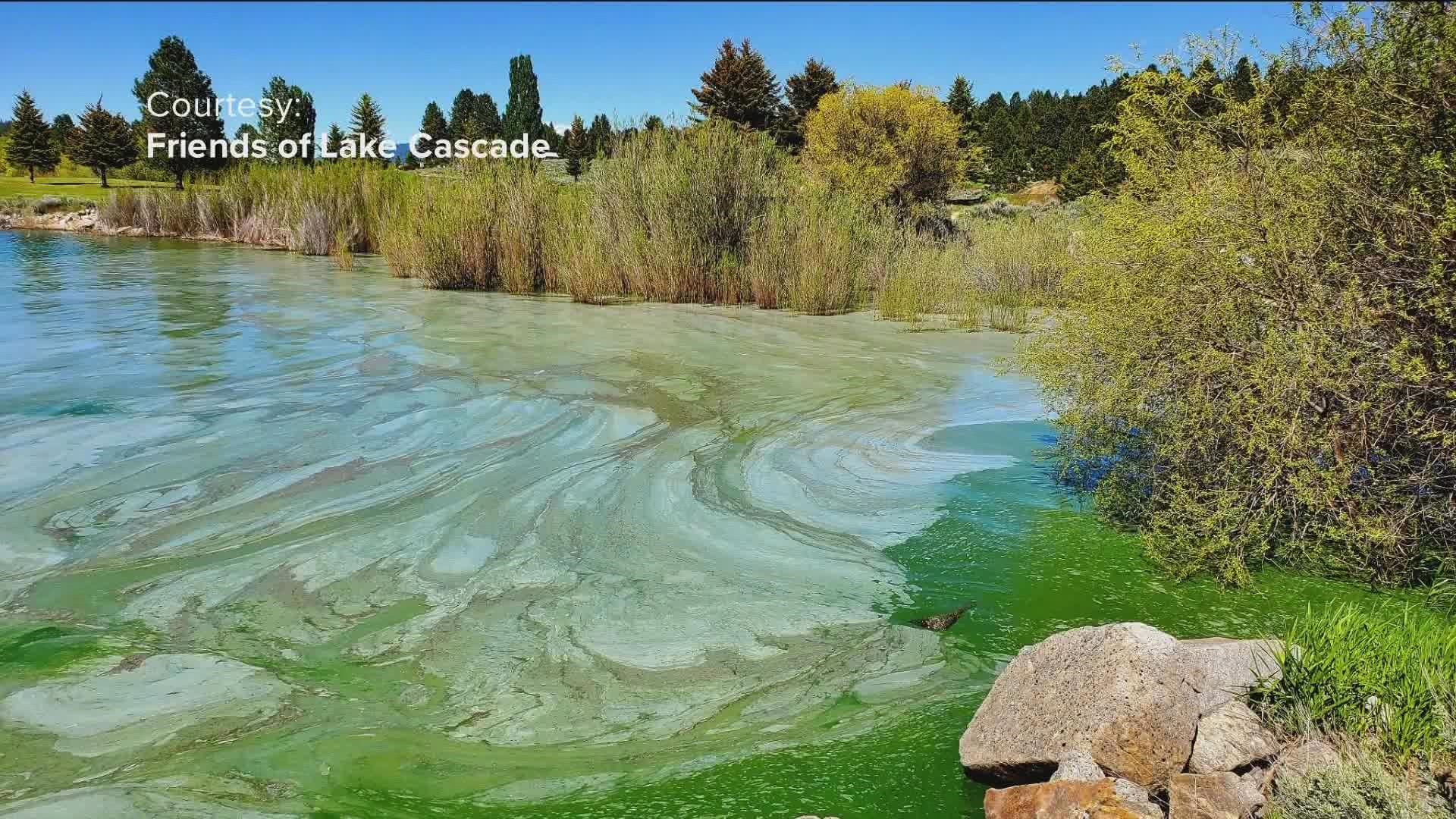CASCADE, Idaho —
Lake Cascade State Park officials alerted the public to an active algae bloom in the lake.
They said that while there have been toxins identified in the lake, it is not high enough to issue a health advisory. However, while there is not a ‘no contact warning’ currently in place, it could still be harmful if ingested. Park officials encourage visitors to exercise caution in the area.
The Idaho Department of Environmental Quality (DEQ) said Cyanobacteria, also known as harmful algae blooms, are a "natural thing that comes and goes" each summer. However, they usually see them later in the summer when it is warmer and waters are more slow-moving. While there is no health advisory for the lake at the moment the DEQ urges people to use caution.
"When I was there last week I saw really colorful water green, blue, brown, striking white, streaky, thick, scummy, opaque [waters]," said Dani Terhaar, a water quality analyst with the Idaho DEQ.
With harmful algae blooms already popping up in the lake in Donnelly, people ahead of the Fourth of July weekend may now be thinking twice before they jump in the water.
"Cyanobacteria are a natural thing that exists in water bodies everywhere and they're always there," Terhaar said. "When they bloom, they've gotten out of balance with something, usually because of nutrients, temperature or something like that."
Terhaar and her DEQ team went to the lake last Wednesday to test the water after they got reports of cyanobacteria. She said she would have not gotten in the water.
"There was foam, floating mats, it was accumulating scum on the shores. You could see it spraying up behind people's boats like pea soup. It was pretty thick, pretty widespread," Terhaar described the water. She added a lot of the bloom was in the South Corridor of the lake, near Blue Herron campground and the golf course by the boat ramp.
Once Terhaar collected the sample, she sent it over to a lab to perform an analysis. That data is sent over to Central District Health which then compares it to their advisory threshold.
According to Idaho's Harmful Algal Bloom Response Plan, to issue a health advisory the water sample must contain:
- Four or more micrograms per liter of microcystins. which is a type of toxin.
- The cell count of the bacteria, Microcystis, has to exceed 20,000 cells per milliliter.
- The sample has to have eight micrograms or more per liter of cylindrospermopsin, another toxin.
According to CDH, the testing samples sent to the department did not meet the threshold to issue a health advisory.
"Even though the toxin levels came back low, I have been hearing reports of people being sick at all different parts of the lake and even a little bit downstream," Terhaar said. "That number is just a brief moment of time from one part of the lake and it doesn't represent the whole picture of this complicated system."
She said not all algae blooms are harmful, but it is important for people to use caution in areas where they are found. She said folks need to especially be careful with dogs in the lake.
"I think it's obvious when there's a bloom, people can use their judgment," Terhaar said.
Terhaar said the Idaho DEQ lab only tested for the "key typical toxins" on the first analysis. They are waiting on the results of other toxin-producing genes that may be in the water. She expects those results to come either tomorrow or friday.
While CDH did not issue any guidance or warnings for the lake, they do ask people to be careful is they see something questionable on or in the water.
"So, whether or not a health advisory is in place, if the water looks questionable or bloom is visble, our best advice is, 'When in doubt, stay out," CDH wrote in a social media post.
The health district will continue to work with Idaho DEQ to monitor health levels in the lake and issue guidance if bacteria and toxins rise to the levels needed.
Environmental officials said to avoid drinking the water, to not allow children or pets to swim where algae blooms are present, rinse off after being in the water, and to wash your hands frequently.
Watch more Local News:
See the latest news from around the Treasure Valley and the Gem State in our YouTube playlist:

